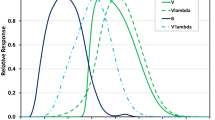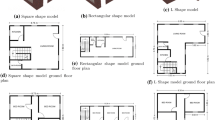Abstract
Street lighting still faces some challenges, e.g., reducing power consumption, lowering light pollution, and making adaptive luminaires more effective among many other concerns. It is evident that the arrival of light-emitting diodes (LEDs) in lighting systems has altered the state-of-the-art and design strategies in lighting. In a traditional approach, a single lamp, i.e., a single light point, is used. Then, by means of lenses, the specification of the radiation pattern is met. However, LED lamps allow for higher flexibility. It is possible to configure many small light sources, positioned and oriented at will. In this paper, a novel software tool able to provide the most suitable solution starting from a certain target lighting specification is proposed. This tool specifies the smallest number of LED required, their geometric orientation, and power levels in order to comply with all the specifications. It is especially useful when trying to light up an irregular, twisted area, although this methodology can be adapted to any geometry. Furthermore, to validate the proposed methodology, two lamps were tested in the streets of Oviedo, Spain, using a staggered arrangement.















Similar content being viewed by others
References
Alonso, J. M., Vina, J., Vaquero, D. G., Martinez, G., & Osorio, R. (April 2012). Analysis and design of the integrated double buck–boost converter as a high-power-factor driver for power-LED lamps. IEEE Transactions on Industrial Electronics, 59(4), 1689–1697. https://doi.org/10.1109/TIE.2011.2109342
Cardesín, J., García-Llera, D., López-Corominas, E., Calleja, A. J., Ribas, J., & Gacio, D. (2013). Low cost intelligent LED driver for public Lighting Smart Grids (pp. 1–6). Gijon: 2013 I.E. International Conference SmartMILE.
Cree® XLamp® XHP70.2 LEDs: http://www.cree.com/led-components/media/documents/ds-XHP702_1.pdf.
Cree® XLamp® XP-G3 LED: http://www.cree.com/led-components/media/documents/dsXPG3.pdf.
de Melo, M. F., Vizzotto, W. D., Quintana, P. J., Kirsten, A. L., Dalla Costa, M. A., & Garcia, J. (2015). Bidirectional grid-tie flyback converter applied to distributed power generation and street lighting integrated system. IEEE Transactions on Industry Applications, 51(6), 4709–4717. https://doi.org/10.1109/TIA.2015.2451115
Gacio, D., Alonso, J. M., Calleja, A. J., Garcia, J., & Rico-Secades, M. (2011). A universal-input single-stage high-power-factor power supply for HB-LEDs based on integrated buck–flyback converter. IEEE Transactions on Industrial Electronics, 58(2), 589–599. https://doi.org/10.1109/TIE.2010.2046578
Garcia-Llera, D. et al. 2015. Optimizing LED lamps design for street lighting with staggered arrangement allowing energy saving strategies in a lighting smart grid context, in IEEE Industry Application Society—51st Annual Meeting, IAS 2015, Conference Record.
Gaston, K. J. (2013). Sustainability: a green light for efficiency. Nature, 497(7451), 560–561. https://doi.org/10.1038/497560a
Jaureguizar, M., Rico-Secades, M., Corominas, E. L., Garcia-Llera, D., & Calleja, A. J. (2013). Enerlight project: Walking from electronic lighting systems to Lighting Smart Grid (pp. 1–6). Gijon: 2013 I.E. International Conference SmartMILE.
Keitz H.A.E. (1974). Light calculations and measurements. N.V. Philips. ISBN: 84-283-0576-5.
Lévai, B. L., Bánhelyi, B., Fasano, G., Pintér Já. D (Eds.) (2015). Automatic design of optimal LED street lights. Optimized Packings with Applications, Springer International Publishing, 175–185, DOI: https://doi.org/10.1007/978-3-319-18899-7_8.
Long, X., Liao, R., & Zhou, J. (February 2009). Development of street lighting system-based novel high-brightness LED modules. IET Optoelectronics, 3(1), 40–46. https://doi.org/10.1049/iet-opt:20070076
Philips lighting simulation software (2015): http://www.lighting.philips.com /main/support/support/dialux-and-other-downloads.
Pizzuti, S., Annunziato, M., & Moretti, F. (2013). Smart street lighting management. Energy Efficiency, 6(3), 607–616. https://doi.org/10.1007/s12053-013-9195-9
Sun, C. C., et al. (2017). Design of LED street lighting adapted for free-form roads. IEEE Photonics Journal, 9(1), 1–13.
Tursunov, M. N., Mirzabaev, A. M., Dadamukhamedov, S., Kanonerov, V. P., Abdullaev, E., & Tukfatullin, O. F. (2009). Photoelectric device for street lighting based on silicon solar cells. Applied Solar Energy, 45(1), 17–20. https://doi.org/10.3103/S0003701X09010058
Acknowledgments
The authors would like to thank the Workroom on Renewable Energy (WRE) magazine staff for their altruistic help during the brainstorming and building all the prototypes.
And last but not least, thanks to MEng. Carlos Garcia Gonzalez, Head of the Lighting Section and Electric Installations in the Oviedo’s city council, for their valuable recommendations and advice.
Funding
This work has been supported by the Ministry of Economy and Competitiveness of the Government of Spain (MINECO), the Government of the Principado de Asturias, and the European Union through the European Regional Development Fund (ERFD), under Research Grants ENE2013-41491-R (LITCITY Project) and GRUPIN14-076.
Author information
Authors and Affiliations
Consortia
Corresponding author
Ethics declarations
Conflict of interest
The authors declare that they have no conflict of interest.
Rights and permissions
About this article
Cite this article
Quintana-Barcia, P.J., Huerta-Medina, N., Rico-Secades, M. et al. A methodology for LED placement in luminaires without lenses for optimal illumination of complex target areas. Energy Efficiency 11, 1041–1051 (2018). https://doi.org/10.1007/s12053-018-9625-9
Received:
Accepted:
Published:
Issue Date:
DOI: https://doi.org/10.1007/s12053-018-9625-9




